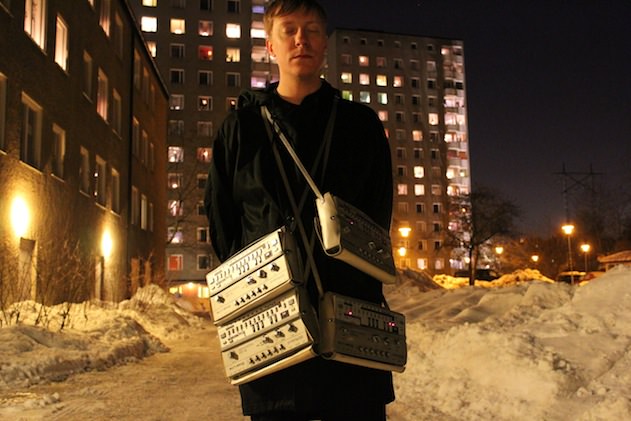Andreas Tilliander’s latest album sees him focus his attentions on Roland’s classic x0x series. We spoke to him to find out how the project came about and discover how he avoids techno cliches.

In the first half of the 1980s, Roland produced a string of instruments which would go on to define genres and change the course of musical history forever. The SH-101, MC-202, TB-303, TR-606, TR-707, TR-808 and TR-909 are iconic pieces of equipment, without which electronic music would sound very very different. In fact, the only member of the x0x series which is a bit of a dud is 1986’s TR-505. The less said about that one the better…
The latest project from Swedish producer Andreas Tilliander – best known for his output under the name Mokira – is a tribute of sorts to the x0x series, based entirely around sounds generated by two 202s, four 303s, two 606s, a 707 and an 808 and released under the pseudonym TM404 (a nod to the rumour that Roland avoided producing a ‘404’ model in the original x0x series because the number four is considered unlucky in Japanese culture).
The resulting album, TM404, is an engrossing, experimental work which is one of our highlights of the year so far. TM404 builds on the classic sounds and tropes of house and techno without falling into the cliches – a style which has seen Tilliander’s recent music described as ‘Detroit techno without the techno’. Andreas himself has described it as ‘somnolent acid’.
We spoke to Andreas to find out a little more about the ideas behind the album, question whether a project like this fetishises the equipment and to discover how he took on the challenge of programming an entire album using the 303’s notoriously fiddly sequencer.
Attack: Tell us about the roots of the project. Did you decide in advance to make an album based entirely on the classic Roland gear or was it an organic process?
Andreas Tilliander: The funny thing is that I never had an album or concept in mind. I recorded the first couple of tracks just as a joke for my friends. People kept telling me I was crazy collecting all those Roland boxes. I had the entire series, but I also had several of some machines, like the 303 especially.
I wanted to show them that it’s possible to use several 303s in one track. You just have to have some imagination and good will. I filmed it just to show them that I didn’t overdub it or anything like that.
Did you program everything on the album using the built-in sequencers? How much did that shape the composition of the tracks?
The MC-202 is a bitch to program so in one of the tracks I’m actually sequencing that particular machine using a computer. All the 303s and the drum machines are programmed on their respective unit. That was part of the fun and what turned out to be a concept. Having all these machines – or rather instruments – playing at the same time at a loud volume was pure bliss. I would have a sequence running for two hours, seriously, and I was afraid to ruin it all by touching a single knob.
The 303s are impossible to program if you want them to play whatever melody you’ve got in your head. It’s more about deciding what harmony they should play and then you have to program, program, program until you’ve got something you like. The best patterns or melodies happen by accident. That’s actually what made me turn to the 303 about ten years ago. At first I was a bit tired of its sound so I would use the internal sequencer to play my other synths, but I rarely used the 303 as a synth. I put out three Tilliander 12″s on my own label in 2007 and most, if not all, of those recordings have a 303 in them. Perhaps that was the first time I released something that really had the 303 playing. I think that the track ‘Cold As Ice’ actually reminds me a bit of TM404. Most of the sounds in that song are done using TB-303s and filters such as the vocoder.
Did you find that the sequencers limited you?
No, not at all. That was what triggered me. I swear by my 303 sequencers just because you don’t really know what to expect while playing with them. In my studio I’m lucky enough to have the best hardware sequencer – the Sequentix Cirklon – and the best soft sequencer – Ableton Live – and I love composing with those but for the TM404 project it was important to rely on the TB-303.

01.46 PM
“Perhaps it’s also due to the fact that a lot of people interested in producing electronic music have day jobs where they spend their time in front of a computer screen. If you stare into a laptop the whole day, you want to do something else when you get home. Twisting knobs and connecting cables to rusty old echo boxes is pure therapy.”
that’s how it is … !
10.35 AM
“When you can buy recorded hooks, drum beats and basses it means anyone can sound like you. If you put together a unique set of musical instruments and effects, you’re bound to create something special.”
I think it’s a bit funny to say this when he’s actually using the most overused pieces of gear, ever. He used them in a special and creative way though.